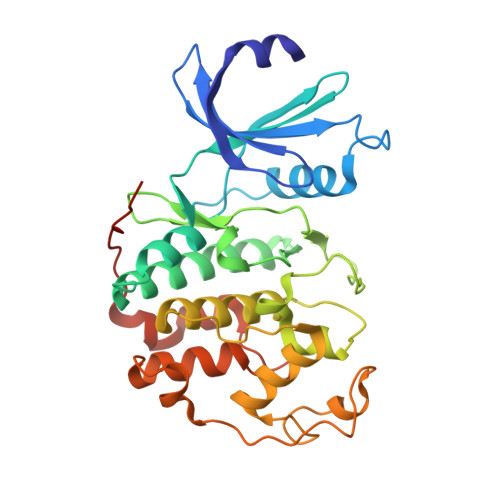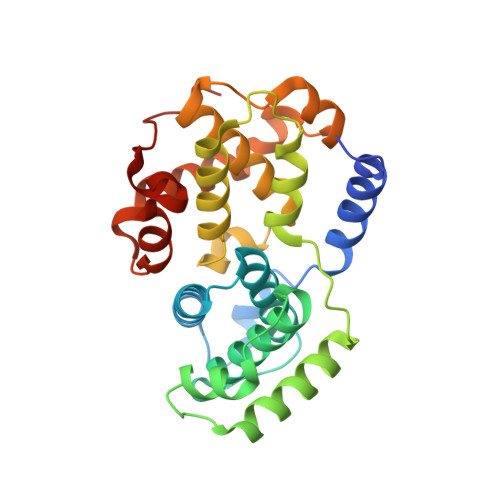3-Aminopyrazole Inhibitors of Cdk2/Cyclin a as Antitumor Agents. Part 1. Lead Finding
Pevarello, P., Brasca, M.G., Amici, R., Orsini, P., Traquandi, G., Corti, L., Piutti, C., Sansonna, P., Villa, M., Pierce, B.S., Pulici, M., Giordano, P., Martina, K., Fritzen, E.L., Nugent, R.A., Casale, E., Cameron, A., Ciomei, M., Roletto, F., Isacchi, A., Fogliatto, G., Pesenti, E., Pastori, W., Marsiglio, A., Leach, K.L., Clare, P.M., Fiorentini, F., Varasi, M., Vulpetti, A., Warpehoski, M.A.(2004) J Med Chem 47: 3367
- PubMed: 15189033
- DOI: https://doi.org/10.1021/jm031145u
- Primary Citation of Related Structures:
1VYW, 1VYZ - PubMed Abstract:
Abnormal proliferation mediated by disruption of the normal cell cycle mechanisms is a hallmark of virtually all cancer cells. Compounds targeting complexes between cyclin-dependent kinases (CDK) and cyclins, such as CDK2/cyclin A and CDK2/cyclin E, and inhibiting their kinase activity are regarded as promising antitumor agents to complement the existing therapies. From a high-throughput screening effort, we identified a new class of CDK2/cyclin A/E inhibitors. The hit-to-lead expansion of this class is described. X-ray crystallographic data of early compounds in this series, as well as in vitro testing funneled for rapidly achieving in vivo efficacy, led to a nanomolar inhibitor of CDK2/cyclin A (N-(5-cyclopropyl-1H-pyrazol-3-yl)-2-(2-naphthyl)acetamide (41), PNU-292137, IC50 = 37 nM) with in vivo antitumor activity (TGI > 50%) in a mouse xenograft model at a dose devoid of toxic effects.
Organizational Affiliation:
Chemistry Department, Pharmacia Italia, Viale Pasteur 10, 20014 Nerviano (MI), Italy. [email protected]

















